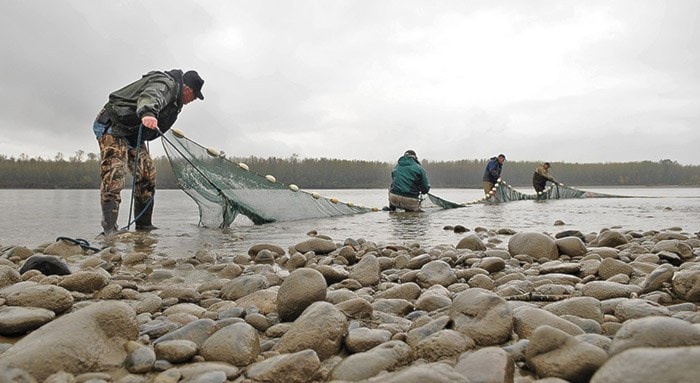Gravel removal from the Fraser River is slated to start again in January or February next year.
And the Fraser River Gravel Stewardship Committee will be there to oppose what they call a destruction of fish habitat that won’t reduce flood risks, as the B.C. government insists.
Marvin Rosenau, a committee member and fisheries biologist, said provincial officials are still not answering “fundamental” questions about the impact of gravel removal on the risk of a Fraser River flood.
“We’re still not getting these answers,” he said Monday, after a tour Saturday of proposed gravel removal sites.
He said if provincial officials could show “a really meaningful flood benefit” through removing gravel in the river’s reach between Hope and Abbotsford, then the stewardship committee would actively support them.
But so far the government has refused to provide the technical studies to back up its claim, he said.
Members of the stewardship committee did meet with Emergency Management B.C. officials last month, and one proposed gravel removal site at Tranmer bar was dropped.
In August, the EMBC announced that gravel removal operations would start again after a two-year hiatus. A list of several proposed removal sites, including the Gill/Hamilton and the Harrison bars, was also announced.
But Rosenau said the EMBC refused at the September meeting to give the committee the technical proof that gravel removal is reducing the flood risk.
It seems a common-sense proposition, that if you remove gravel from the river, there will be more room for the water, thus reducing the chances of a flood.
But Chris Gadsden, a long-time fisherman and a Chilliwack member of the stewardship committee, doesn’t see it that way.
He said you couldn’t remove enough gravel from the river to make one iota difference in the water level.
“You’d never be able to do that, because the river is so immense,” he said. “It’s a gravel grab, that’s all it is.”
And it’s clear to Gadsden that fish habitat — the gravel where salmon and other fish species spawn and rear their young — is being destroyed by the removal operations.
Rosenau called the river reach “probably the Number One juvenile chinook rearing habitat in all of B.C., or at least the Fraser system.”
Gravel bars are created and then disappear naturally, he agreed, and they can even rebuild themselves into suitable fish habitat after their tops are “scalped” in a gravel removal operation.
But they won’t have the time to rebuild if they are constantly being mined, year after year, he said.
“Show us what the benefits are, give us an empirical understanding of how much dike freeboard you’re going to lose (if gravel mining is stopped),” he said, and the committee would actively support removal operations.
Meanwhile, Rosenau doesn’t see much hope for gravel removal opponents in the upcoming Cohen commission report or in the possibility of an NDP government after next year’s provincial election.
But whoever forms government, the stewardship committee is going to be there fighting for fish habitat.
Although Rosenau said the committee members are not the radical environmentalists as often portrayed by B.C. Liberal MLAs.
“We’re not a bunch of whacko, hair-shirted, greenie-weenies,” Rosenau said. “We’re just normal guys who want to see their kids through school — and see a thriving eco-system.”
